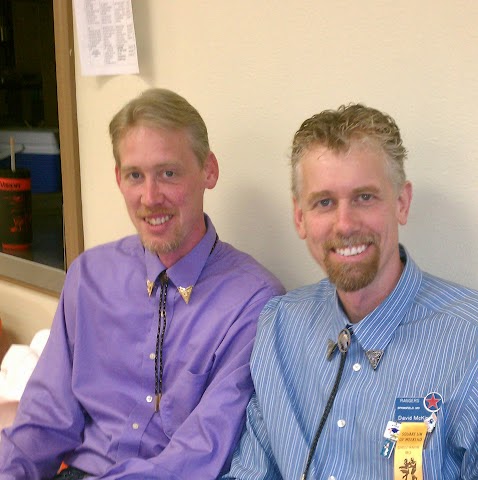David W Mckinnon
age ~66
from Gervais, OR
- Also known as:
-
- David N Mckinnon
- Dave W Mckinnon
- David Mckinnonm
- Davidwmc Kinnon
- Phone and address:
- 13855 Butteville Rd NE, Gervais, OR 97026
David Mckinnon Phones & Addresses
- 13855 Butteville Rd NE, Gervais, OR 97026
- La Mirada, CA
- Avalon, CA
- Winter Springs, FL
- San Diego, CA
- Rancho Palos Verdes, CA
- Orlando, FL
- Prescott, AR
- Ocoee, FL
- Indian Trail, NC
- Altamonte Springs, FL
Work
-
Company:Remax Allstar
-
Address:15023 Gulf Blvd
-
Phones:(727)8312002 (727)3919585
Images
Specialities
Buyer's Agent • Listing Agent • Relocation • Short-Sale
Real Estate Brokers

David Mckinnon, Madera Beach FL Realtor
view sourceSpecialties:
Buyer's Agent
Listing Agent
Relocation
Short-Sale
Listing Agent
Relocation
Short-Sale
Work:
Remax Allstar
15023 Gulf Blvd
(727)8312002 (Office), (727)8312002 (Cell), (727)3919585 (Fax)
15023 Gulf Blvd
(727)8312002 (Office), (727)8312002 (Cell), (727)3919585 (Fax)
Experience:
7 years
Description:
David Mckinnon is a true Florida Native. He has lived in the Tampa Bay area for the last 43 years. David is happily married to his beautiful wife of 20 years and the proud father of 2 teenagers. David enjoys the beach and sunsets with His wife and surfing and coaching soccer with His Kids. David has mentored teens for 20 years and volunteers at both of his children's schools. Real Estate is David's passion and He loves his work. Buying or selling or looking for an investment property, David is there to guide you through the process hassle free. call or email David Mckinnon today!
Links:
Site
Facebook
LinkedIn
Name / Title
Company / Classification
Phones & Addresses
Baymac Electrical Systems Ltd
Electricians
Electricians
Po Box 508 Stn Postal Box Ctr, Red Deer, AB T4N 5G1
(403)3461299, (403)7842577
(403)3461299, (403)7842577
New owner MAY/96
Riverside Marine Ltd
Boat Dealers & Brokers. Outboard Motors
Boat Dealers & Brokers. Outboard Motors
2337 Dollarton Hwy, North Vancouver, BC V7H 1B1
(604)9292845
(604)9292845
Product Manager-competency Suite And Recruitment
WORKSTREAM USA, INC
485 N Keller Rd SUITE 500, Maitland, FL 32751
(407)4755500
(407)4755500
DCM SOLUTIONS, INC
WOODFAERY LLC
Baymac Electrical Systems Ltd
Electricians
Electricians
(403)3461299, (403)7842577
Owner, President
BIG MAC PRODUCTIONS, INC
Ornamental Nursery
Ornamental Nursery
13835 Butteville Rd, Gervais, OR 97026
(503)7923170
(503)7923170
Vice President,Treasurer,Director
NEW IMAGE CLEANING SERVICES, INC
Us Patents
-
Depth Estimate Determination, Systems And Methods
view source -
US Patent:20120163672, Jun 28, 2012
-
Filed:Dec 20, 2011
-
Appl. No.:13/330883
-
Inventors:David McKinnon - Los Angeles CA, US
-
International Classification:G06K 9/00
-
US Classification:382106
-
Abstract:Systems and methods for generating pixel based depth estimates are disclosed. An image processing system operating as depth analysis engine generates an estimated depth associated with a pixel based on a reference image and other related images. A current depth estimate is refined based on neighboring pixels and calculated consistency scores. Further, depth estimates can be levered in object or scene recognition to trigger or initiate an action taken by a computing device.
-
Strip Closure With Improved Support System
view source -
US Patent:43123961, Jan 26, 1982
-
Filed:Oct 22, 1979
-
Appl. No.:6/087011
-
Inventors:Duane M. McKinnon - Chino CA
David A. McKinnon - Upland CA -
International Classification:A47H 2305
-
US Classification:160332
-
Abstract:A flexible multi-strip closure is supported in a vertically hanging position by means on horizontally oriented structural beads attached to each strip, which beads are retained in a horizontally oriented, inverted U-shape channel which includes an entrapment portion for supporting the beads against vertical forces and at least one lip to eliminate stress concentrations in the flexible strips when they are flexed. Releasable means are provided adjacent at least one end of the channel to restrict horizontal movement of the beads and to allow removal of the beads with their attached strips for cleaning and replacement.
-
Multiparty Object Recognition
view source -
US Patent:20200301502, Sep 24, 2020
-
Filed:Jun 11, 2020
-
Appl. No.:16/899518
-
Inventors:- Culver City CA, US
John Wiacek - Culver City CA, US
David McKinnon - Culver City CA, US
Matheen Siddiqui - Culver City CA, US -
Assignee:Nant Holdings IP, LLC - Culver City CA
-
International Classification:G06F 3/01
H04L 29/06
G06F 3/0484
G06F 3/0481
A63F 13/65
A63F 13/213
G06T 19/00
A63F 13/215 -
Abstract:Multiparty object recognition systems and methods are disclosed. A method of interactively manipulating virtual object data, wherein an object database is configured to store first party object data that corresponds to a first real-world object and is further configured to store second party object data that corresponds to a second real-world object, includes obtaining the first party object data and the second party object data for storage within the object database. Access to the object database is controlled such that the first party object data and the second party object data is accessible to the first party and the second party. Modification of the first party object data by the second party is facilitated to generate modified first party object data that is in accordance with at least one context parameter of the second party object data, and the modified first party object data is communicated to the first party.
-
Global Visual Vocabulary, Systems And Methods
view source -
US Patent:20180189608, Jul 5, 2018
-
Filed:Feb 27, 2018
-
Appl. No.:15/907130
-
Inventors:- Culver City CA, US
David McKinnon - Culver City CA, US -
Assignee:Nant Holdings IP, LLC - Culver City CA
-
International Classification:G06K 9/62
G06F 17/27
G06F 17/30 -
Abstract:Systems and methods of generating a compact visual vocabulary are provided. Descriptor sets related to digital representations of objects are obtained, clustered and partitioned into cells of a descriptor space, and a representative descriptor and index are associated with each cell. Generated visual vocabularies could be stored in client-side devices and used to obtain content information related to objects of interest that are captured.
-
Fast Recognition Algorithm Processing, Systems And Methods
view source -
US Patent:20180165519, Jun 14, 2018
-
Filed:Jan 26, 2018
-
Appl. No.:15/881043
-
Inventors:- Culver City CA, US
Bing Song - La Canada CA, US
Matheen Siddiqui - Culver City CA, US
David McKinnon - Venice CA, US
Jeremi Sudol - Los Angeles CA, US
Patrick Soon-Shiong - Los Angeles CA, US
Orang Dialameh - Santa Monica CA, US -
Assignee:Nant Holdings IP, LLC - Culver City CA
-
International Classification:G06K 9/00
G06T 7/00
G06F 17/30
G06T 11/60
G16H 30/40
G06K 9/62 -
Abstract:Systems and methods of quickly recognizing or differentiating many objects are presented. Contemplated systems include an object model database storing recognition models associated with known modeled objects. The object identifiers can be indexed in the object model database based on recognition features derived from key frames of the modeled object. Such objects are recognized by a recognition engine at a later time. The recognition engine can construct a recognition strategy based on a current context where the recognition strategy includes rules for executing one or more recognition algorithms on a digital representation of a scene. The recognition engine can recognize an object from the object model database, and then attempt to identify key frame bundles that are contextually relevant, which can then be used to track the object or to query a content database for content information.
-
Invariant-Based Dimensional Reduction Of Object Recognition Features, Systems And Methods
view source -
US Patent:20180005081, Jan 4, 2018
-
Filed:Sep 15, 2017
-
Appl. No.:15/706600
-
Inventors:- Culver City CA, US
Jeremi Sudol - Los Angeles CA, US
Bing Song - La Canada CA, US
Matheen Siddiqui - Culver City CA, US
David McKinnon - Culver City CA, US -
Assignee:Nant Holdings IP, LLC - Culver City CA
-
International Classification:G06K 9/62
G06K 9/46 -
Abstract:A sensor data processing system and method is described. Contemplated systems and methods derive a first recognition trait of an object from a first data set that represents the object in a first environmental state. A second recognition trait of the object is then derived from a second data set that represents the object in a second environmental state. The sensor data processing systems and methods then identifies a mapping of elements of the first and second recognition traits in a new representation space. The mapping of elements satisfies a variance criterion for corresponding elements, which allows the mapping to be used for object recognition. The sensor data processing systems and methods described herein provide new object recognition techniques that are computationally efficient and can be performed in real-time by the mobile phone technology that is currently available.
-
Fast Recognition Algorithm Processing, Systems And Methods
view source -
US Patent:20170262704, Sep 14, 2017
-
Filed:May 22, 2017
-
Appl. No.:15/602022
-
Inventors:- Culver City CA, US
Bing Song - La Canada CA, US
Matheen Siddiqui - Culver City CA, US
David McKinnon - Venice CA, US
Jeremi Sudol - Los Angeles CA, US
Patrick Soon-Shiong - Los Angeles CA, US
Orang Dialameh - Santa Monica CA, US -
Assignee:Nant Holdings IP, LLC - Culver City CA
-
International Classification:G06K 9/00
G06T 7/00
G06K 9/62
G06T 11/60
G06F 17/30
G06F 19/00 -
Abstract:Systems and methods of quickly recognizing or differentiating many objects are presented. Contemplated systems include an object model database storing recognition models associated with known modeled objects. The object identifiers can be indexed in the object model database based on recognition features derived from key frames of the modeled object. Such objects are recognized by a recognition engine at a later time. The recognition engine can construct a recognition strategy based on a current context where the recognition strategy includes rules for executing one or more recognition algorithms on a digital representation of a scene. The recognition engine can recognize an object from the object model database, and then attempt to identify key frame bundles that are contextually relevant, which can then be used to track the object or to query a content database for content information.
-
Fast Recognition Algorithm Processing, Systems And Methods
view source -
US Patent:20170046571, Feb 16, 2017
-
Filed:Oct 27, 2016
-
Appl. No.:15/336754
-
Inventors:- Culver City CA, US
Bing Song - La Canada CA, US
Matheen Siddiqui - Culver City CA, US
David McKinnon - Venice CA, US
Jeremi Sudol - Los Angeles CA, US
Patrick Soon-Shiong - Los Angeles CA, US
Orang Dialameh - Santa Monica CA, US -
Assignee:Nant Holdings IP, LLC - Culver City CA
-
International Classification:G06K 9/00
G06T 11/60 -
Abstract:Systems and methods of quickly recognizing or differentiating many objects are presented. Contemplated systems include an object model database storing recognition models associated with known modeled objects. The object identifiers can be indexed in the object model database based on recognition features derived from key frames of the modeled object. Such objects are recognized by a recognition engine at a later time. The recognition engine can construct a recognition strategy based on a current context where the recognition strategy includes rules for executing one or more recognition algorithms on a digital representation of a scene. The recognition engine can recognize an object from the object model database, and then attempt to identify key frame bundles that are contextually relevant, which can then be used to track the object or to query a content database for content information.
Resumes

Cpa And Founder
view sourceWork:
Mckinnon Patten
Cpa and Founder
Cpa and Founder
Education:
Southern Methodist University - Cox School of Business
Bachelors, Bachelor of Business Administration, Business Management, Accounting
Bachelors, Bachelor of Business Administration, Business Management, Accounting

David Mckinnon
view source
David Mckinnon
view sourceLocation:
United States
Youtube
Myspace
Plaxo

David G. McKinnon
view source
David McKinnon
view sourceHewlett Packard
Flickr

David Mckinnon
view source
David McKinnon Sr.
view source
David McKinnon
view source
David Mckinnon
view source
David Mckinnon
view source
David McKinnon
view source
David Mckinnon
view source
David McKinnon
view sourceGoogleplus

David Mckinnon
Work:
Copenhagen Resource Institute - Consultant (2009)
Education:
Roskilde University - Tek-Sam, UCE Birmingham - Computer Science, University of Birmingham - Material Science

David Mckinnon
Education:
Halifax West High School
Bragging Rights:
Biked The Cabot Trail. 310km in three long days.

David Mckinnon

David Mckinnon

David Mckinnon

David Mckinnon

David Mckinnon

David Mckinnon
Classmates

David McKinnon
view sourceSchools:
Carroll County High School Hillsville VA 1968-1972
Community:
Patricia Branscome

David McKinnon
view sourceSchools:
Redford Union High School Redford MI 1972-1976
Community:
Jill Parrinello, Carole Caron

David McKinnon
view sourceSchools:
King William High School King William VA 1990-1994
Community:
Daisy Smith

David McKinnon
view sourceSchools:
Blessed Hope Academy San Antonio TX 1981-1985
Community:
Alesia Taylor, William Cotham, Suzan Brock, James Whitehead, Kristi Walker

David McKinnon
view sourceSchools:
The Bement School Deerfield MA 1970-1973
Community:
Darryl Mccloud, Jeremy Royer

David McKinnon
view sourceSchools:
Howell High School Howell MI 1984-1988
Community:
Pam Sparr, Jennifer Hamlett

David McKinnon
view sourceSchools:
East Lansing High School East Lansing MI 1977-1981
Community:
Annyce Arendt

David McKinnon
view sourceSchools:
Colbert High School Colbert OK 1996-2000
Community:
Nicole Meade, Erin Hitt, Christina Mahoney, Denise Goleman, Amanda Jackson, Nitha Huff
Get Report for David W Mckinnon from Gervais, OR, age ~66

















